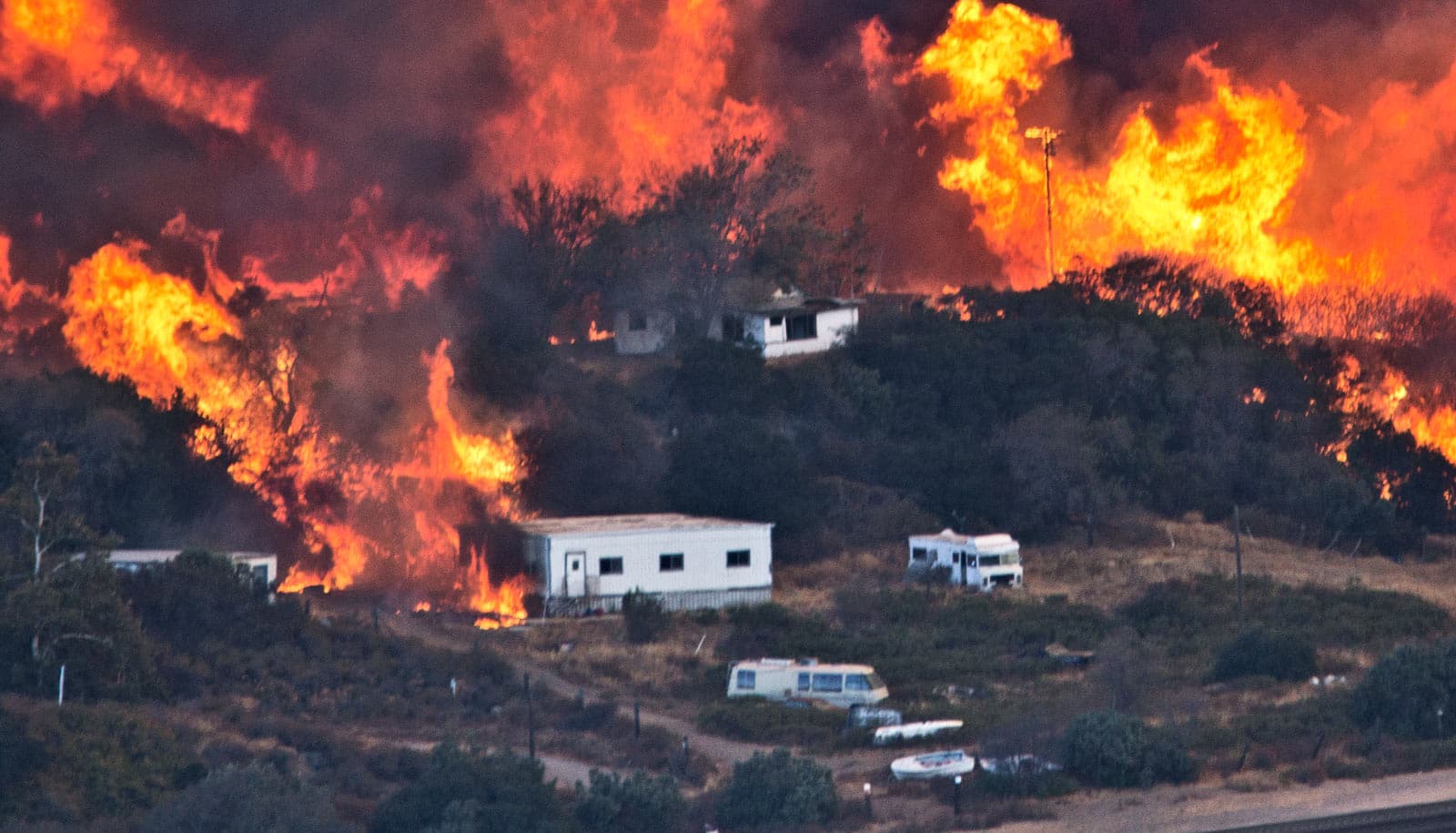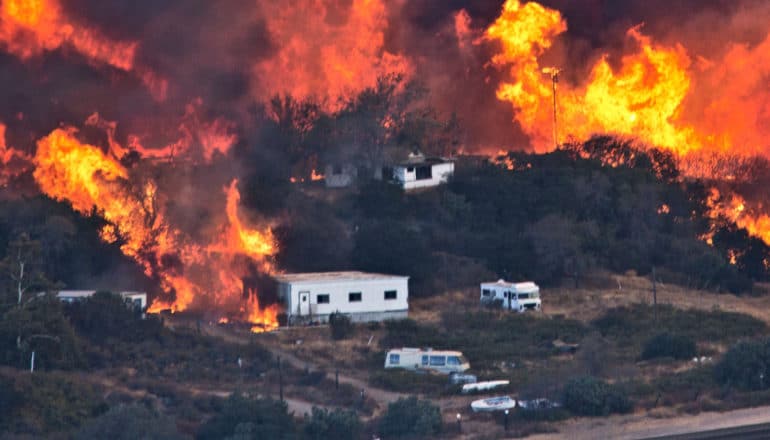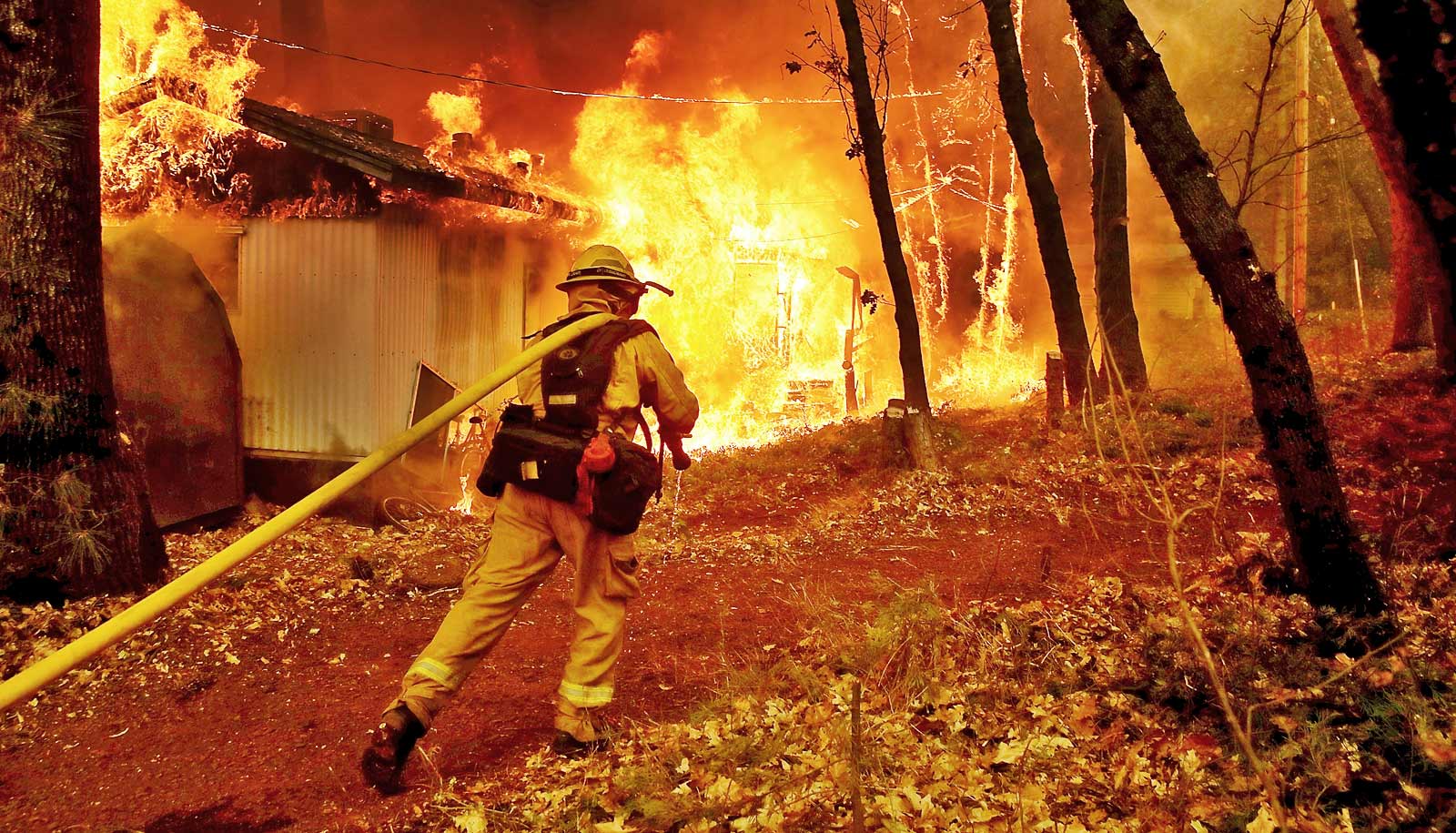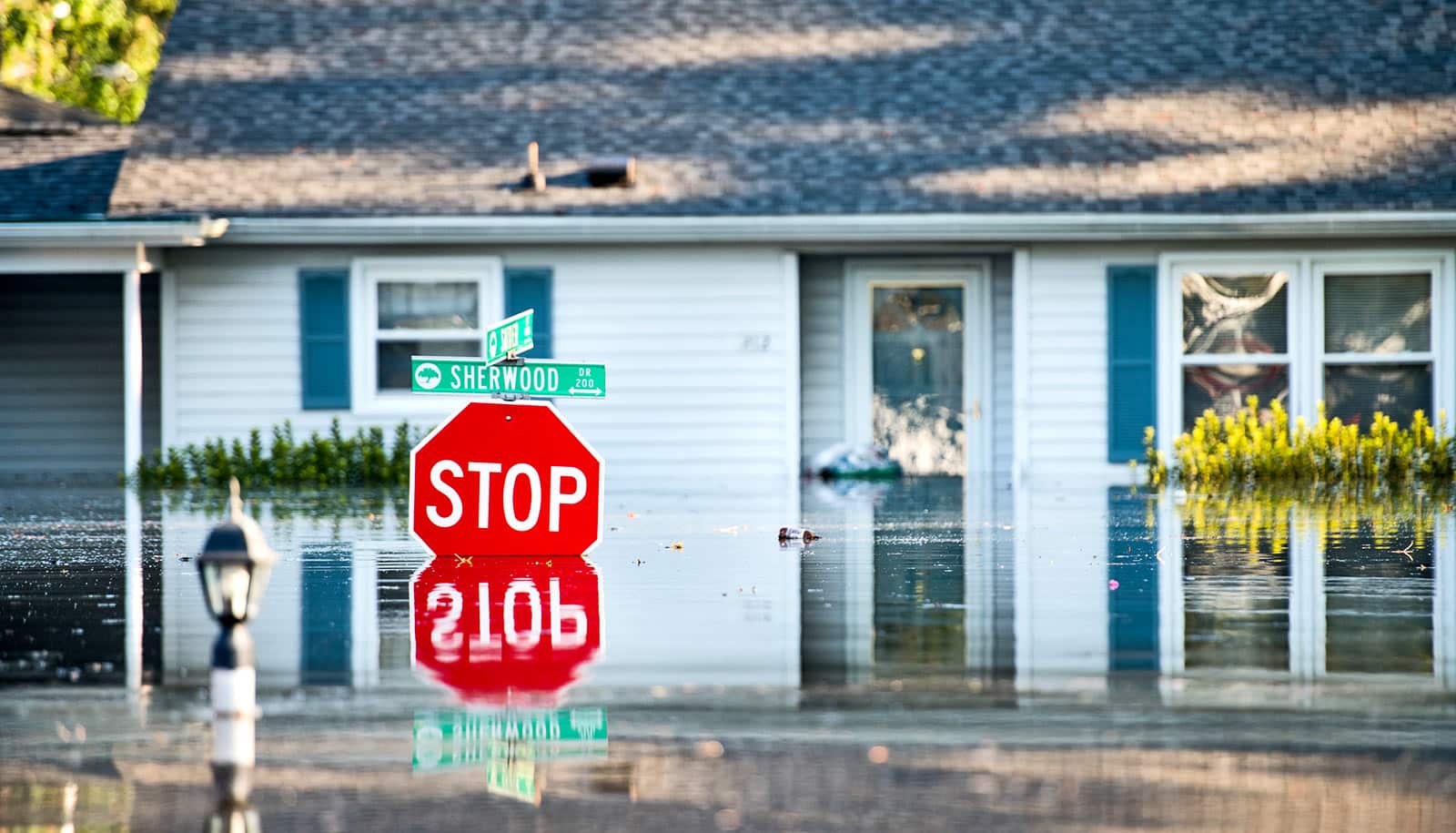
Flames sweep through a rural community at the Blue Cut Fire on August 17, 2016 near Wrightwood, California.(Credit: David McNew/Getty Images )
Wet winters no longer ease California’s wildfire risk
"Fire not being influenced by moisture anymore? That is surprising. It's going to be a problem for people, for firefighters, for society."

Wet winters no longer predict possible relief from severe wildfires for California, according to a new study.
From 1600 to 1903, the position of the North Pacific jet stream over California linked to the amount of winter precipitation and the severity of the subsequent wildfire season, researchers say. The jet stream brought wet winters and low wildfire activity followed. In contrast, higher wildfire activity generally followed dry winters.
“Fire not being influenced by moisture anymore? That is surprising.”
After 1904, the connection between jet stream carrying winter moisture from December through February and the severity of the wildfire season weakened. The research team reports that the weakened connection between precipitation and wildfires corresponds to the onset of a fire suppression policy on US federal lands. After 1977, that connection disappeared altogether.
Now, fuel buildup from decades of fire suppression in the 20th century, plus rising temperatures from climate change, means any year may have large fires, no matter how wet the previous winter, the researchers say.
“The moisture availability over California is still strongly linked to the position of the jet stream, but fire no longer is,” says coauthor Valerie Trouet, an associate professor of dendrochronology at the University of Arizona Laboratory of Tree-Ring Research.
“I didn’t expect there to be no relationship between jet stream dynamics and fire in the 20th century. I expected it to be maybe weaker than before, but not to completely disappear.”
California’s wet winter of 2016-2017 is a good example, Trouet says. Many large fires in 2017, including the Tubbs fire in October and the Thomas fire in December, followed that winter. Twenty-four people died and 6,699 structures burned in those two fires, according to the California Department of Forestry and Fire.
“It’s not either climate change or historical fire management—it’s really a combination of the two that’s creating a perfect storm for catastrophic fires in California,” Trouet says.
400 years of records
To reconstruct California’s fire and moisture patterns and the position of the North Pacific jet stream for the past 400 years, researchers combined instrumental and historical records of temperature, precipitation, and fires with the natural archives of climate and fires stored in tree rings that go back in time for centuries.
“The method we used to determine the average winter jet stream conditions is a real advance,” says lead author Eugene R. Wahl of the National Oceanic and Atmospheric Administration.
“When the jet stream is positioned over California, it’s like a fire hose.”
The study, which appears in the Proceedings of the National Academy of Sciences, is the first to show the close connection between winter precipitation in California and the position of the jet stream back to the year 1571, Trouet says. It’s also the first to examine the relationship of past winter precipitation, the position of the jet stream, and past fire activity stretching back to 1600.
Initially, Wahl and coauthor Eduardo Zorita of the Helmholz-Zentrum Geesthacht in Germany worked independently of Trouet and coauthor Alan Taylor.
As part of a larger project to extend global reconstructions of temperature, precipitation, and atmospheric circulation further into the past, Wahl and Zorita figured out how the North Pacific jet stream affects precipitation in California for centuries. Wahl, a paleoclimatologist at NOAA’s National Centers for Environmental Information in Boulder, Colorado, was a co-leader of the North America part of the larger project.
Trouet and Taylor of Penn State had already reconstructed California’s fire history back to 1600, and Trouet had reconstructed the behavior of the North Atlantic jet stream back to 1725.
After Wahl heard Trouet give a presentation about her North Atlantic jet stream research, the four scientists joined forces to see if they could find a link between the past behavior of the North Pacific jet stream and California’s fire and precipitation history.
“When the jet stream is positioned over California, it’s like a fire hose—it brings storms and moisture straight over California,” Trouet says. “What we see post-1900 is that the position of the jet stream is still an important driver of moisture to California—it brings moisture to California when it’s in the right position–but there’s a disconnect with fire.”
High-fire years
The likelihood that every year may be a high-fire year could pose a significant societal challenge, Taylor says.
“Fire not being influenced by moisture anymore? That is surprising. It’s going to be a problem for people, for firefighters, for society,” he says. “The only thing we can control is fuels, so what it suggests is that we take that very seriously.
“The last three years may be a harbinger of things to come. Between 1600 and 1903 there was not a single case of a high-precipitation year coupled with a high-fire year as occurred in 2017.”
The researchers next plan to expand their research to see how the jet stream patterns correspond with fire in other types of forested ecosystems farther north.
The US National Science Foundation, the US Geological Survey’s Southwest Climate Science Center, the US Department of Agriculture Forest Service, the German Science Foundation Cluster of Excellence Clisap, a George H. Deike, Jr. Research Grant, and the Swiss National Science Foundation funded the research.
Source: University of Arizona
The post Wet winters no longer ease California’s wildfire risk appeared first on Futurity.
Share this article:
This article uses material from the Futurity article, and is licenced under a CC BY-SA 4.0 International License. Images, videos and audio are available under their respective licenses.


